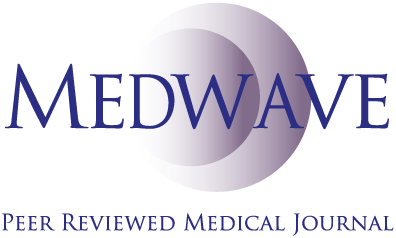Letters to the editor
← vista completaPublished on October 3, 2017 | http://doi.org/10.5867/medwave.2017.08.7052
Impact of the “El Niño Costero” phenomenon on the Peruvian population's health in 2017
Impacto del fenómeno “El Niño costero” sobre la salud de la población peruana en 2017
Dear editor:
On February 2, 2017, the Peruvian multisector committee in charge of the "National Study of the El Niño Phenomenon" (ENFEN) stated that, in view of the recent evolution of atmospheric ocean circumstances in the eastern equatorial Pacific (including the north coast of Peru), the necessary conditions for an event "coastal weak El Niño" or "El Niño-Southern Oscillation (ENSO)" were consolidated. This condition contributes to the increase of the sea temperature and the frequency of rains of very strong magnitude in the Pacific hydrographic basin, especially on the north coast of our country [1]. Hence, the status of "Niño Costero Alert" was activated, a state that, according to the last communication of the ENFEN committee (June 12, 2017), ended in May, and was changed from “alert” status to "not active" [2].
During this rainy season, intense rainfall caused 453 “huaycos” or landslides of mud and rock, 314 floods, 158 collapses and 238 landslides. These events killed 163 people and left 276,871 people injured. They caused damage to 375,864 houses, 3,450 educational institutions and 1,131 health facilities. They also destroyed 4,391 km of roads, 24,131 km of irrigation canals and 51,378 hectares of crop areas [3].
The high temperatures, humidity and stagnant water caused by the El Niño Coastal phenomenon triggered the appearance of many infectious diseases. In the departments of Ica, Loreto, Lima, etcetera, 5,441 cases of Zika were confirmed [4]; 58,161 cases of dengue in the departments of Piura, La Libertad, Ica, Tumbes, Lambayeque, etcetera [5]; 20,545 cases of malaria (mostly in Loreto) [6]; 1,122 cases of Chikungunya (in the departments of Piura, Tumbes, etcetera) [7]. They were also diagnosed 1,027,390 cases of acute respiratory infections and 220,425 cases of diarrheal diseases in children under five years of age [8],[9].
It is therefore important that health authorities continue providing adequate tools –supplying essential drugs, improving and repairing infrastructure of health facilities, ensuring provision of human resources during this season, among others- that guarantee integral healthcare services to the affected areas. They must also work on a correct epidemiological surveillance of health problems that have arisen during this rainy season and "coastal weak El Niño", and continue working together with the population for people to be trained and prepared to avoid new infectious outbreaks in case of a similar event.
Notes
From the editor
The author originally submitted this article in Spanish and English. The Journal has not copyedited this English version.
Declaration of conflicts of interest
The authors affirm that they have no conflicts of interest related to this letter.
Financing
The authors state that there were no external sources of funding.

